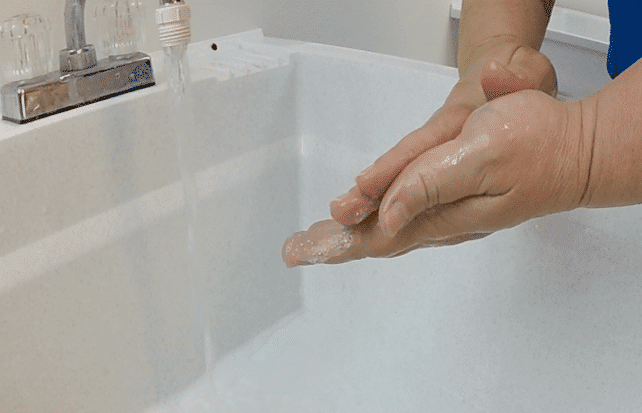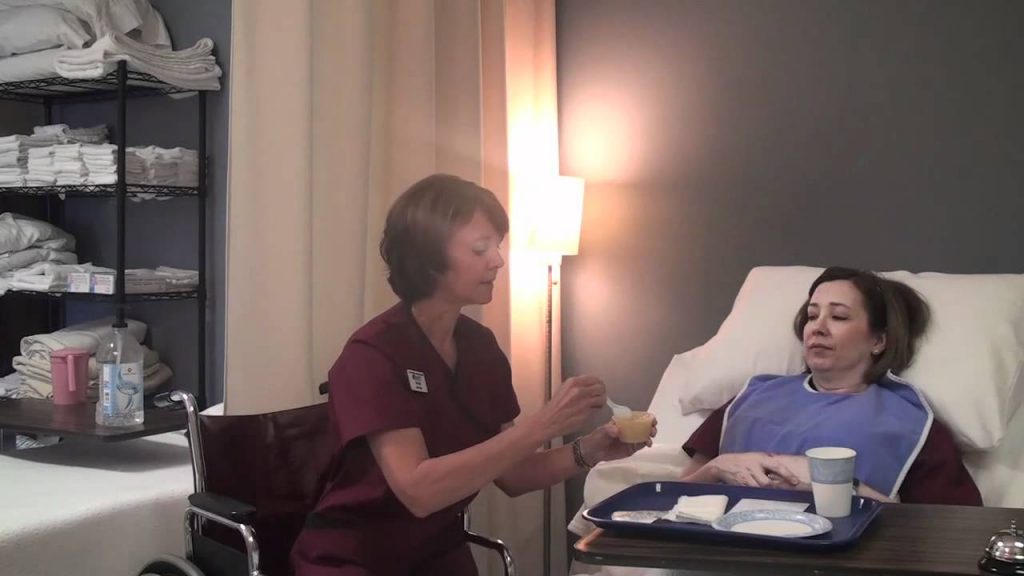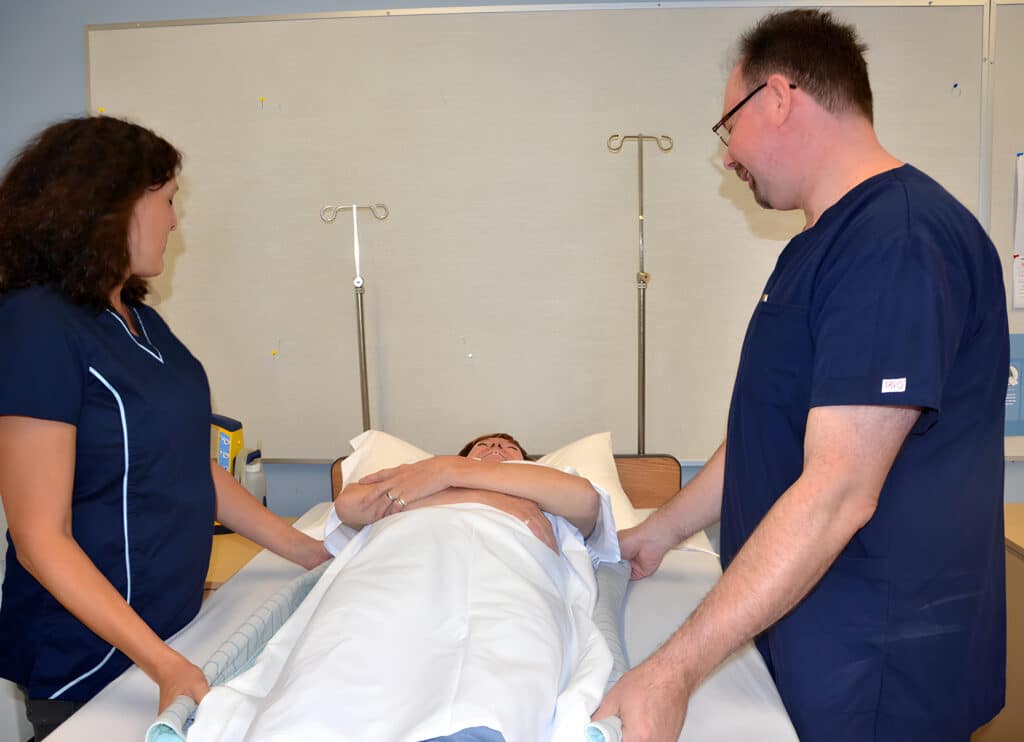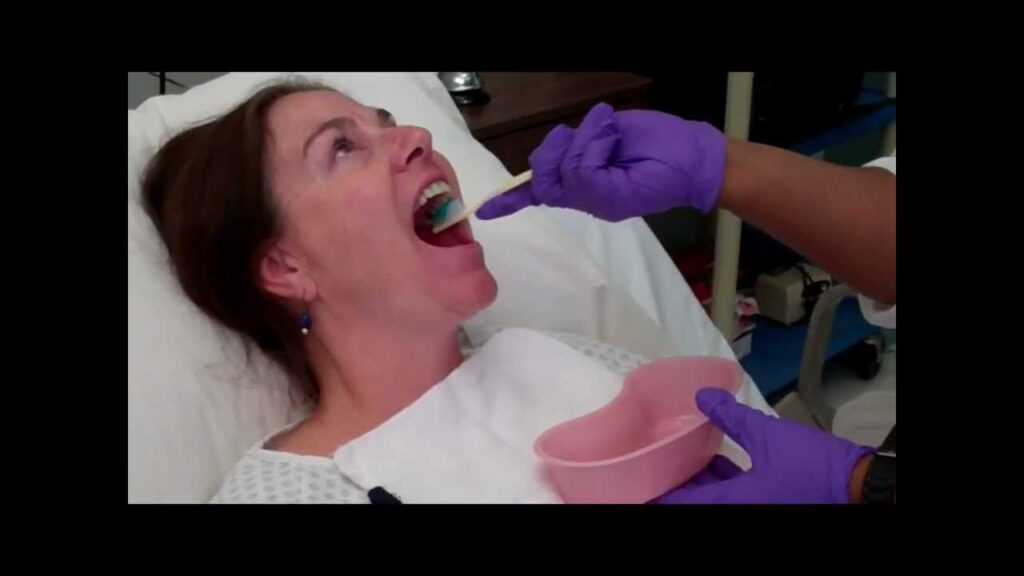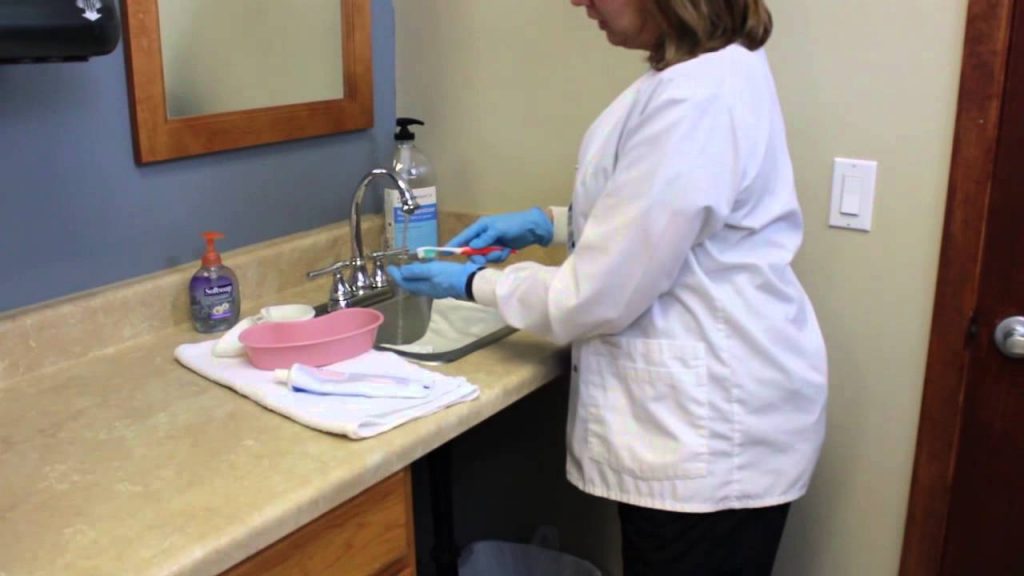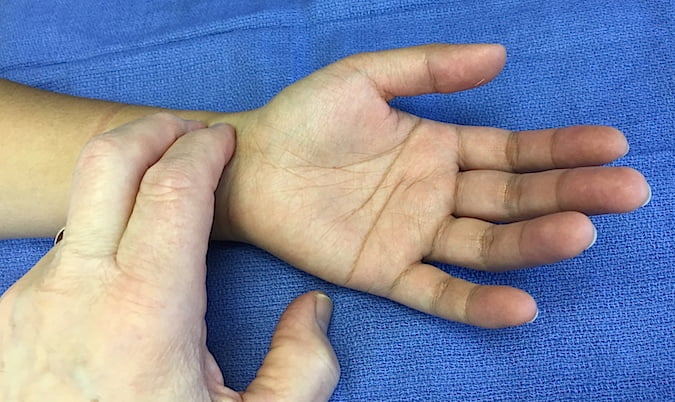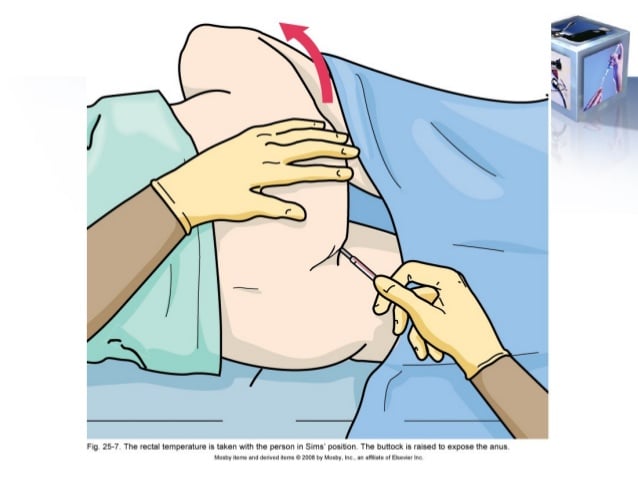Written by Hollie Finders, RN
Hollie Finders is a registered nurse with years of experience working in the health care field. She has degrees in both biochemistry and nursing. After working with patients of all ages, Hollie now specializes in pediatric intensive care nursing. Hollie’s LinkedIn
Handwashing Procedure
Equipment needed: sink, soap, and paper towels
- Turn on faucet and adjust water temperature to a comfortable setting.
- If necessary, roll up sleeves. From this point forward, avoid readjusting the water temperature or touching any part of the sink.
- Wet hands, keeping arms angled downward, so the water runs from cleanest area (wrists) to the dirtiest area (fingertips).
- Apply soap to hands.
- Create a lather by rubbing hands together. Scrub all surfaces of the wrists, hands, fingers, spaces between fingers, thumbs, and cuticles for a minimum of 15 seconds.
- Clean beneath fingernails by gently scratching them in the palm of the opposite hand or by scraping under each nail individually.
- Thoroughly rinse all cleansed surfaces to remove any remaining suds. Remember to angle arms to keep the fingers lower than the wrists.
- Use a clean, dry paper towel to dry hands. Discard the used paper towel. Don’t shake hands to dry them.
- Use another clean paper towel to turn off the faucet. Discard the used paper towel.
- If hands are contaminated at any point in this process, stop and repeat steps 1-9.
The Importance of Handwashing
Handwashing is considered the single most important practice to prevent the spread of infection [1]. Even when hands look clean, they could potentially be crawling with dangerous microorganisms and pathogens. Using soap and friction during handwashing helps loosen the oils on the skin, allowing dirt and pathogens to be rinsed away.
In the health care setting, handwashing is a key component of standard precautions and an infection control measure that applies to all patients regardless of their infection status [2]. Failure to wash one’s hands puts the patient receiving care, other patients, and the health care worker at risk of infection. All health care workers are expected to wash their hands before and after every patient encounter, between cases, before and after wearing gloves, and any time the hands are soiled. Using proper handwashing technique helps break the chain of infection and creates a safer environment for all individuals.
References
1. https://www.osha.gov/SLTC/etools/hospital/hazards/infection/infection.html

